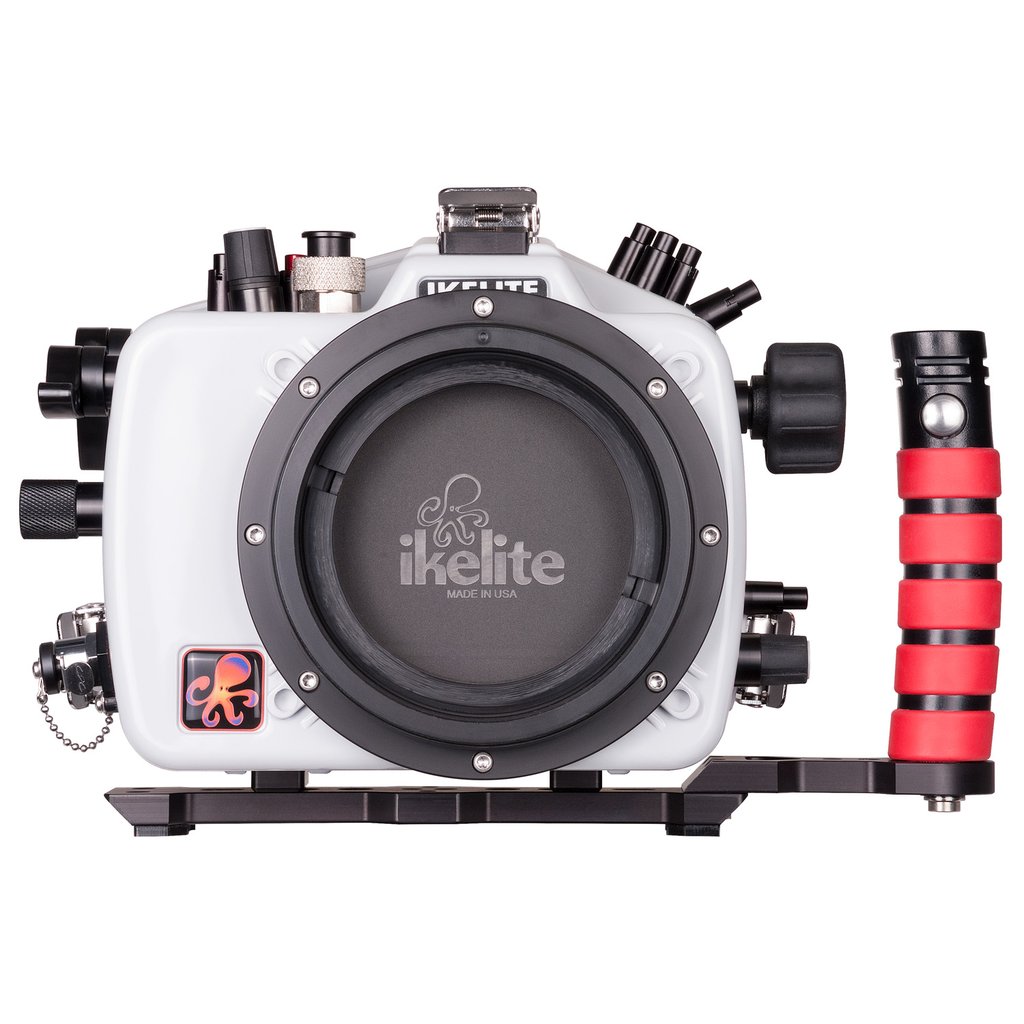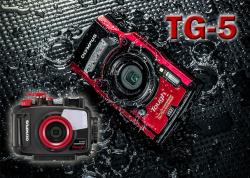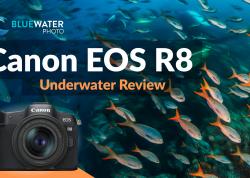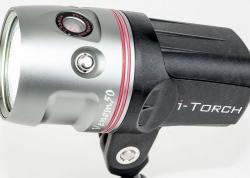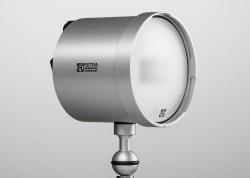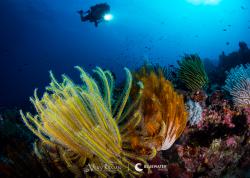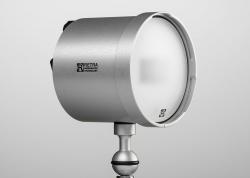Nikon D850 Underwater
Check out our updated full review of the Nikon D850 for Underwater Photography here!
For most underwater shooters, the D850 may well be the best DSLR ever made. In the past there has always been a compromise between speed and high resolution. No more. The D5 autofocus system that the D850 inherited, plus the 7 frames per second will be more than enough for just about every situation underwater. The dynamic range and ISO performance will be hugely appealing to wide angle shooters, and the resolution to allow insane detail and ability to crop heavily will appeal to macro shooters.
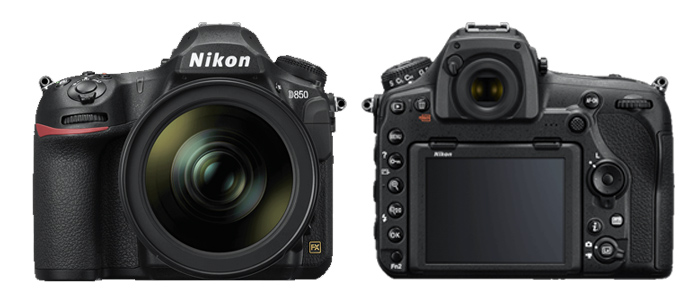
Jump to Section:
The Nikon D850 is available now at Bluewater Photo!
KEY FEATURES:
The highlights that will be important to underwater shooters and differentiate the D850 from its predecessor the D810
- 45.75 megapixel Full Frame BSI (Back-Side Illuminated) Sensor
- The world's best autofocus system taken from the Nikon D5 (153 AF points, 99 cross type)
- Can focus center spot down to -4EV
- Improved low and high ISO performance over the D810/Improved Dynamic Range.
- 7fps, 51 shot raw buffer
- True full frame 4K video
- Max flash sync speed 1/250s
- XQD/SD card slots
UNDERWATER PERFORMANCE
Recently I took the Nikon D850 and the new Nauticam D850 housing out for a few dives in SoCal. Most of my recent underwater photography has been with the Nikon D810 and Nikon D500. The D850 is sort of a mashup between those two cameras so there wasn't much of a learning curve. Below I've touched on several of the areas that I feel will be important to underwater photographers interested in the Nikon D850.
INCREDIBLE SENSOR
The 36 megapixel sensor in the D810, for a long time, was held up as the gold standard for DSLR image quality. It was hard to imagine any improvement over that camera in terms of image quality, but the D850 seems to have succeeded. The resolution of the upgraded sensor is staggering and the dynamic range is at least as good, if not better, than the D810. Which is nice considering the higher resolution sensor, and the fact that underwater photographers often have to deal with high contrast scenes underwater, especially for wide angle shooting.
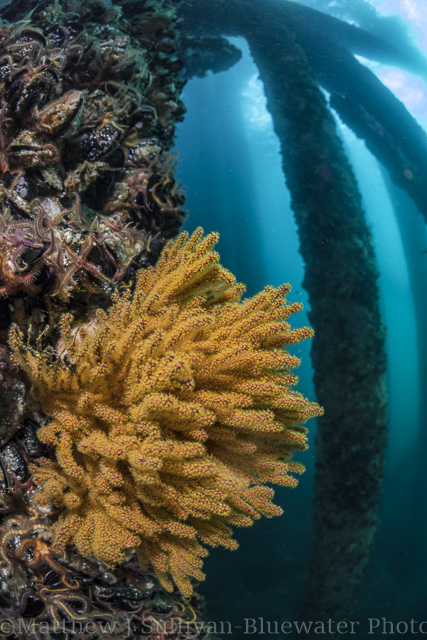
A coldwater gorgonian attached to a piling of the Eureka Oil Rig off Southern California. Not the most exciting of scenes but it shows the potential for the dynamic range in the D850. I definitely could've pulled more details from the shadows as there is plenty of detail there and the highlights aren't blown. Nikon D850, Nauticam Housing, Nikonos 13mm, 2x Retra Flash w/Wide angle diffusers on 1/4 power. 1/15, f5.0, ISO 320
AUTOFOCUS SPEED
The Nikon D810 and the Nikon D4 had the same autofocus system. However, the D4 was noticeably faster, especially in low light. With that said, I was expecting the D850 autofocus to lag noticeably compared to the D5 (which I have not used) and the D500 (which I have used extensively). The latter two cameras have entirely separate processors JUST for the autofocus, while the D850 does not. The D850 legitimately surprised me. I spent a while shooting Bluebanded Gobies on some recent dives. For those who have dived California, Bluebanded Gobies are a well known subject. The are beautiful, but excruiatingly painful to photograph. They are small, skittish, live in the typically dark California waters, and like to hang out in the dark, beneath overhangs. The D850 locked onto the small fish pretty much instantaneously without the need for a focus light.
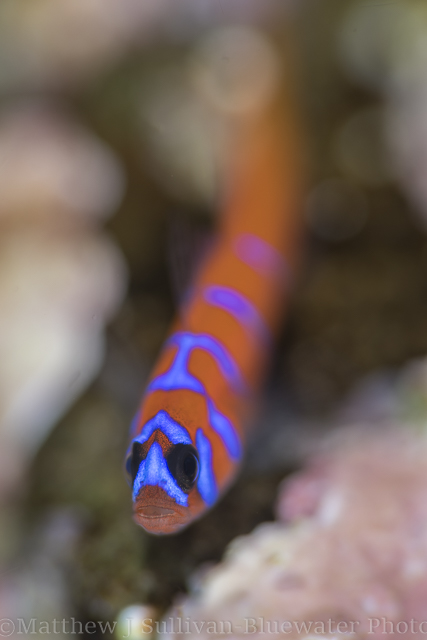
-My two preferred modes for the D850 when shooting macro are (AFC-3D) 3D tracking and Dynamic 9 Point AF (AFC-GRP 9). 3D tracking locks onto the subject and then follows it around the frame and Dynamic 9 Point activates 9 autofocus points that are movable in a group around the frame. For wide angle shooting, especially of fast animals, I like to use Continuous AF (AFC-Auto). It does a much better job of keeping up with moving subjects than I ever could myself. 3D tracking is also nice in these instances but i found it to not be quite as competent as AFC-Auto in this circumstances.
ISO PERFORMANCE
After the autofocus performance, the high ISO capabilities of the D850 were what interested me the most. Obviously at low ISO's, the D850 shines. However, high resolution bodies historically don't usually fare as well as their lower resolution relatives at increased ISOs because of the smaller pixel size. The D810 was never a camera I enjoyed pushing very far into high ISOs, and I absolutely hated to go above ISO 800. The D500 in my opinion can be pushed a bit more. The shot below with the D850 was taken in near darkness at ISO 2500. Yes, there is clearly noise present, but nowhere near as horrendous as I anticipated and the dynamic range even at this high an ISO is still remarkable as plenty of detail could be pulled from the shadows. It does not match up to the pro bodies cameras like the D4 (and the D5 is even better), but it also has drastically more resolution so the fact is can even be mentioned in the same sentence as the other two is quite remarkable.
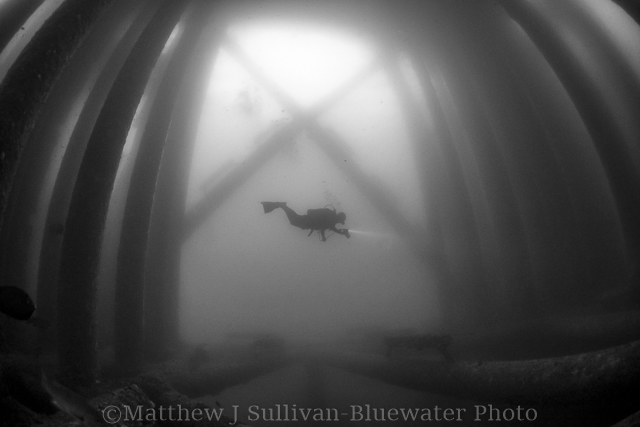
Recommended Lenses:
To get the most out of such a high resolution sensor, the best quality Nikon lenses will need to be used.
Macro:
- Nikon 105mm 2.8G VR Macro
- Nikon 60mm 2.8G Macro
Wide Angle Fisheye:
- Nikon 8-15mm 3.5-4.5G Fisheye - Best fisheye overall for Nikon FF
- Sigma 15mm 2.8 Fisheye - The budget option but focuses very close, is quite sharp and much cheaper than the other lenses listed. Be careful though, not every copy of this lens is sharp and the D850 high resolution sensor will show any flaw in the lens.
- Nikon 16mm 2.8 Fisheye - Sharper, more expensive than sigma, but does not focus as close
Wide Angle Rectilinear:
- Nikon 16-35mm 4.0 - The mose popular and versatile choice but requires a big dome port for acceptable image quality
- Nikon 20mm 1.8G - Small, compact, sharp, doesn't NEED as big a dome as the 16-35
UNDERWATER HOUSINGS:
Nauticam Nikon D850 Housing - $3,800
Ikelite Nikon D850 Housing - $1,695
Aquatica Nikon D850 Housing - TBA
Sea & Sea Nikon D850 Housing - TBA
CONCLUSION:
The closest competitors to the D850 are the Nikon D810, the Canon 5D Mark IV/Canon 5DSR, and the new Sony A7R III which is not yet available. The D850 may well be the best DSLR ever made for underwater photography and it will be hard to really find fault with it. I'm having trouble myself resisting buying one. Anyone purchasing a D850 and corresponding housing should rest assured they have a camera that can produce images with market leading quality.
Thank you to Bluewater Photo for providing the test camera and Nauticam housing for use on this initial review, and I hope you can join me a trip next year (1 spot left on the Anilao trip I'm running next month)
RELATED ARTICLES:
- Underwater Photography Guide: Nikon D850 for Underwater Photography
- Underwater Photography Guide: Nikon's Newest Full Frame Fisheye Option
- Bluewater Photo Store: Nikon 8-15mm FX AF-S f/3.5-4.5E ED Zoom Fisheye Review by Mark B. Hatter
RECOMMENDED ARTICLES
SUPPORT THE UNDERWATER PHOTOGRAPHY GUIDE:
The Best Service & Prices on u/w Photo Gear
 Visit Bluewater Photo & Video for all your underwater photography and video gear. Click, or call the team at (310) 633-5052 for expert advice!
Visit Bluewater Photo & Video for all your underwater photography and video gear. Click, or call the team at (310) 633-5052 for expert advice!
The Best Pricing, Service & Expert Advice to Book your Dive Trips
 Bluewater Travel is your full-service scuba travel agency. Let our expert advisers plan and book your next dive vacation. Run by divers, for divers.
Bluewater Travel is your full-service scuba travel agency. Let our expert advisers plan and book your next dive vacation. Run by divers, for divers.





